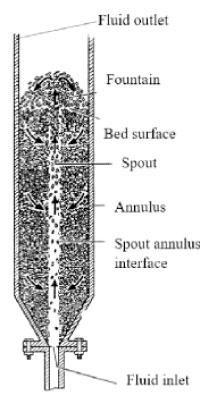Drying is the removal of moisture adhering to a material by vaporisation. Moisture is located on the surface and in the interior of the material, such as capillaries and interstices. Drying crops, as a post-harvest method, is a requisite for safe storage to prevent product contamination due to microbial attacks.
Preservation of crops through drying, which dates back centuries, is based upon solar power. A wide variety of crops, such as grains, oil seeds, spices, and some perishable crops, such as fruits and vegetables, are subjected to drying. Development of alternate drying technologies has begun due to limitations in sun drying, in particular, uncontrolled weather conditions and mass production.
Many investigations have been conducted on conventional drying methods as well as new drying techniques. Conventional drying methods, such as packed bed, cabinet or tray drying, and fluidised bed drying, are convective air-drying techniques. Most new drying methods consist of state-of-the-art equipment with high capital and operational costs, namely freeze drying, vacuum, osmotic, microwave, and combinations of some of the above.
However, drying contributes to the loss of aroma, flavour, and nutritive quality of the product; hence, careful selection of the best-suited drying technique and conditions for a given product is extremely important.
Dryers are typically categorised based on the method of heat transfer, namely direct-contact type and indirect-contact type. Usually, direct contact type dryers transfer heat by convection, while indirect contact type dryers transfer heat by conduction and radiation. In addition, dryers can be classified as batch or continuous dryers, considering the method of operation.
Some researchers have classified either the physical form of the feed or the residence time of the product being dried in the dryer. Moreover, some of the newer and novel dryers cannot be fit into the classification suggested in the literature, even though they are not mentioned in most textbooks.
About 50 types of dryers are widely used in practice to dry a wide range of materials, but more than 400 types of dryers have been cited in the literature. Examples of some of the commonly used types in the industry are rotary dryers, tray dryers, fluidised bed dryers, spray dryers and flash dryers. There is no specified theory or principle for dryer selection.
Many factors have to be considered to select a suitable dryer, compromising on cost, efficiency, product quality, and a clean environment. In addition, the selection of a suitable dryer for a particular material depends on prior experience. Capital cost and operational cost, quality of the product, safety considerations, convenience of handling, and installations have a direct impact on selecting a dryer for a particular material.
Usually, drying processes cause emissions of tiny particles, gases, and water vapour. Therefore, dryers are coupled with particle collection equipment such as cyclone separators, bag filters, scrubbers, and electrostatic precipitators. In addition, absorption, adsorption, and incineration units can be used for the treatment of noxious gaseous pollutants exhausted from dryers used for various materials in the industry.
Spouted beds
Spouted beds are gas-particle contactors that have been applied not only for drying of granular materials, pastes with inert particles, solutions, and suspensions but also in a wide range of operations and chemical processes, such as blending of solids, coating, granulation, cooling, combustion, and pyrolysis.
Numerous experimental and theoretical investigations on spouted beds during the past seven decades have been carried out worldwide with various types of particles, such as biomass particles, namely barley, millet, carrot cubes, paddy, soybean corn, sawdust, etc., and non-bio mass particles such as glass beads and sand.
A typical conventional spouted-bed dryer is illustrated in . Hot gas is introduced vertically upward into the bed through the centrally located opening at the bottom of the vessel. Hot air jet causes a stream of particles to rise rapidly through the hollowed central core or spout within the bed of solid.
Particles, after rising to a height above the surface of the surrounding packed bed or annulus, rain back as a fountain onto the annulus. Particles in the annulus region slowly move downwards, and fluid from the spout leaks into the annulus and percolates through the moving packed-bed and, to some extent, inward as a loosely packed-bed. The gaseous streams flowing away through the annulus and spout-region enter the fountain-region, and both streams are mixed and flow away the dryer through the fluid outlet of the dryer.
The major difference between the spouted bed dryer and the fluidised bed dryer is the particle flow pattern. In a spouted bed, the fluid is moving through the spout region using a nozzle rather than a perforated distributor as in a fluidised bed. Ordinary fluidised bed experiences an oscillatory and more random particle flow pattern, while particles in the spouted bed move upwards through the spout and come down through the annulus.
 The conventional spouted bed dryer is characterised by a cylindrical vessel with a conical base. It has undergone various modifications to improve its performance, such as spouted beds of different geometries, spout-fluid beds, and insertion of draft tubes. Or draft plates, multiple spouts, etc.. Spouted bed vessels may have several geometries, such as cylindrical, conical-cylindrical, two-dimensional (slot rectangular), triangular, paraboloid-based, etc.
The conventional spouted bed dryer is characterised by a cylindrical vessel with a conical base. It has undergone various modifications to improve its performance, such as spouted beds of different geometries, spout-fluid beds, and insertion of draft tubes. Or draft plates, multiple spouts, etc.. Spouted bed vessels may have several geometries, such as cylindrical, conical-cylindrical, two-dimensional (slot rectangular), triangular, paraboloid-based, etc.
Spouted beds have good solid mixing, and relatively large air velocity helps to maintain the constant product temperature. As a consequence of it, spouted beds can eliminate the possibility of overheating when the moisture content of the material is low at the end of the drying period.
Figure 1: Schematic diagram of a conventional spouted-bed (Reference- Fayed and Otten, Handbook of Powder Science)
Experimental drying trials were conducted using a laboratory-scale spouted bed dryer at the Department of Chemical and Process Engineering, University of Moratuwa. These trials were carried out as part of the author’s postgraduate research under the supervision of Prof. (Mrs.) B. M. W. P. K. Amarasinghe, a pioneer in spouted bed research in Sri Lanka.
During the study, black pepper was selected as the model crop due to its economic importance. The experiments focused on assessing moisture removal rates and final product quality under varying airflow rates and inlet air temperatures. Key parameters such as essential oil volume and constituents of the essential oil of black pepper with different drying temperatures were monitored and analysed. The results confirmed that the drying of black pepper at 65 degrees Celsius in a spouted bed dryer provided the best preservation of aroma and quality when compared to conventional drying techniques.
These findings have important implications for agricultural practices in Sri Lanka, particularly for high-value spice crops such as black pepper, cloves, and cardamom. Spouted bed dryers offer a scalable, efficient, and weather-independent solution, particularly useful during the monsoon season when traditional sun drying is ineffective.
This technology enables improved post-harvest management, reduces losses from microbial spoilage, and enhances the export potential of Sri Lankan spices by maintaining product quality and extending shelf life. Finally, the author would like to acknowledge the great support and contribution of Prof. Amarasinghe in initiating work on spouted bed drying.
By Dr. (Mrs) G.K. Jayatunga
Institute of Technology,
University of Moratuwa







